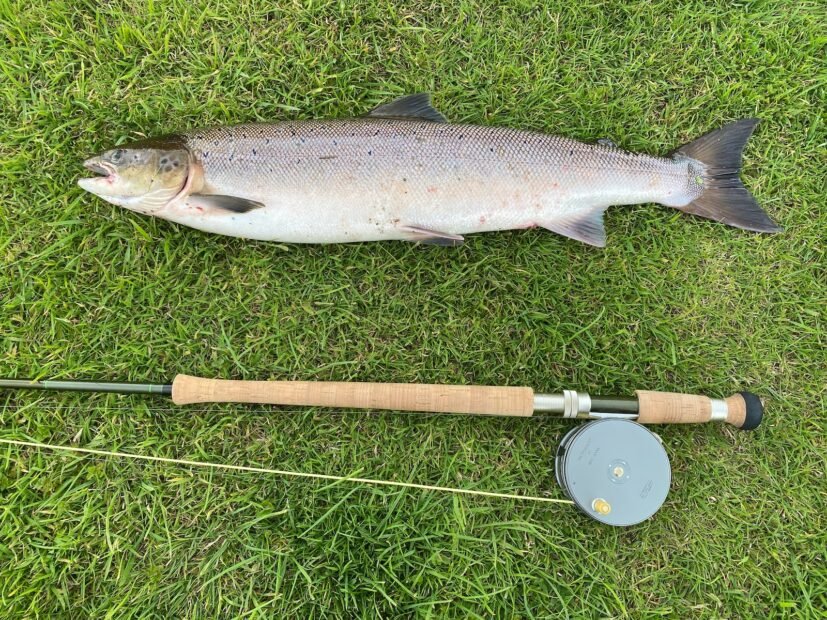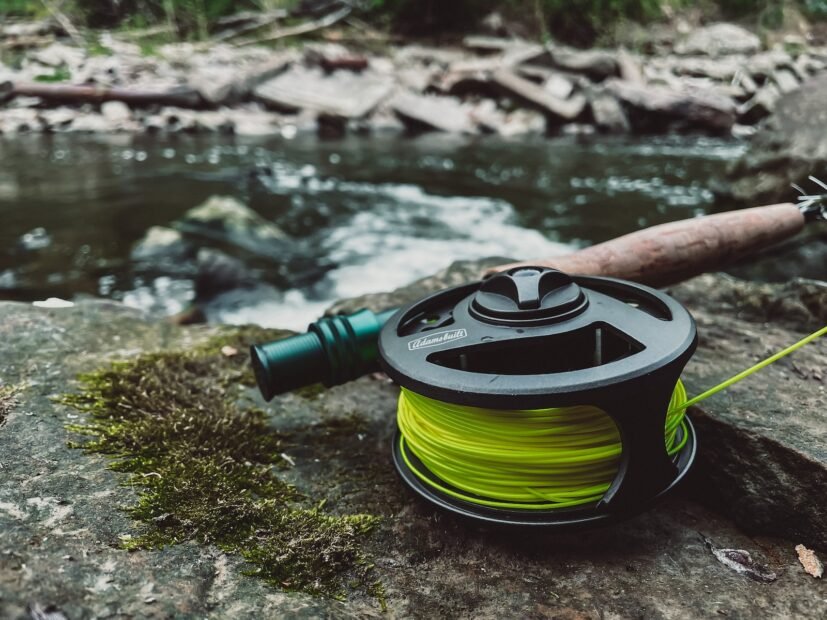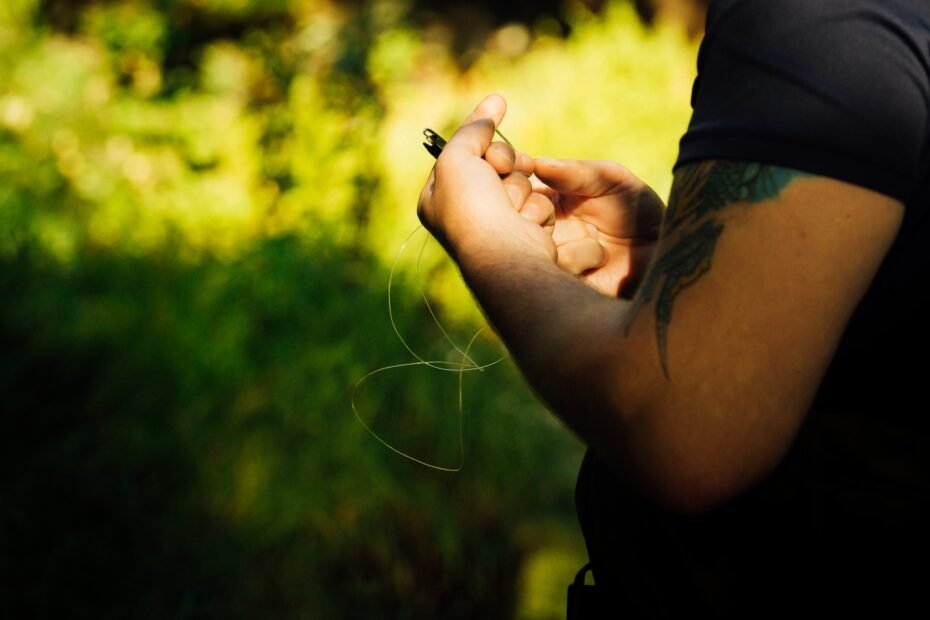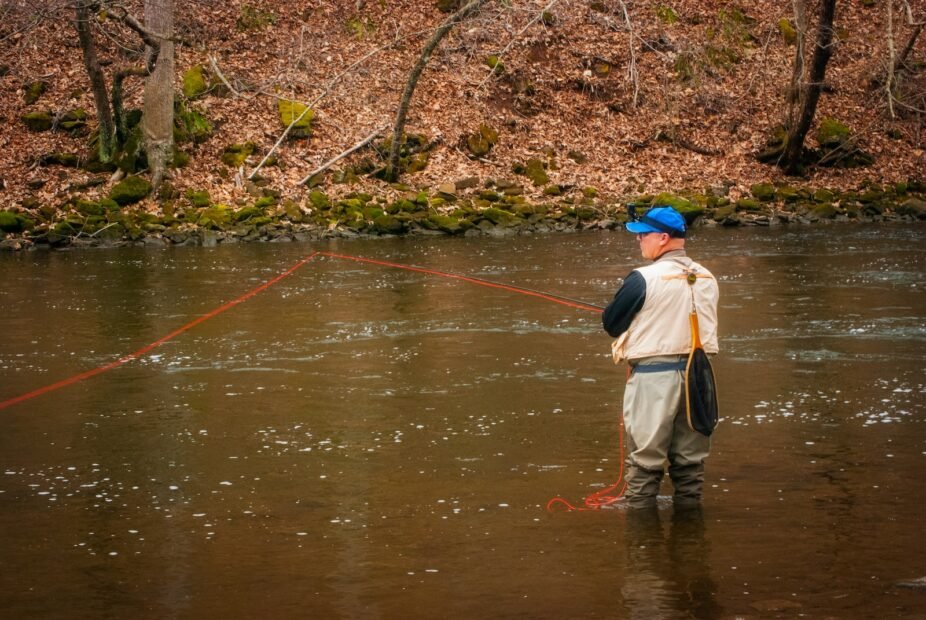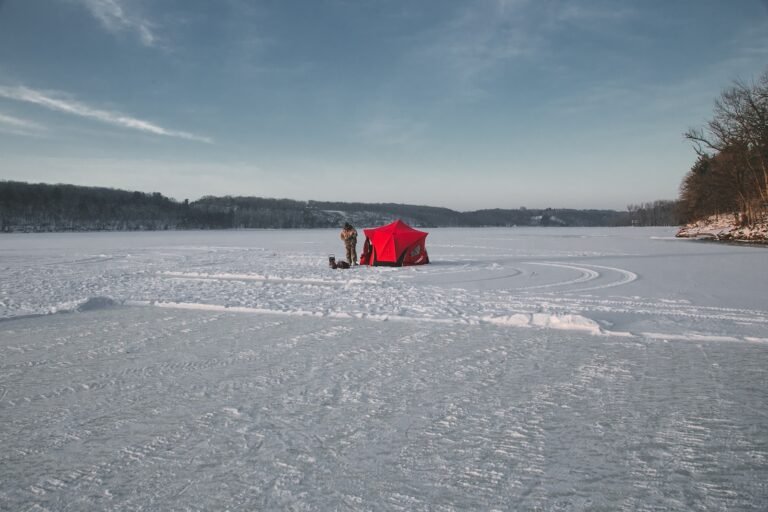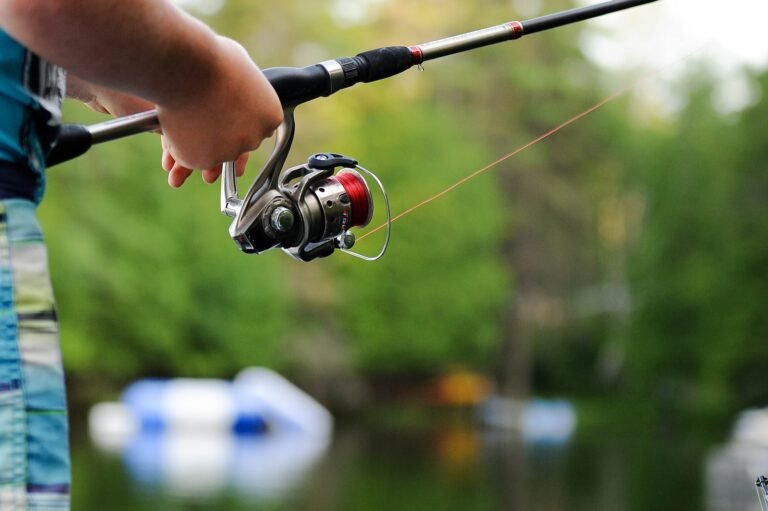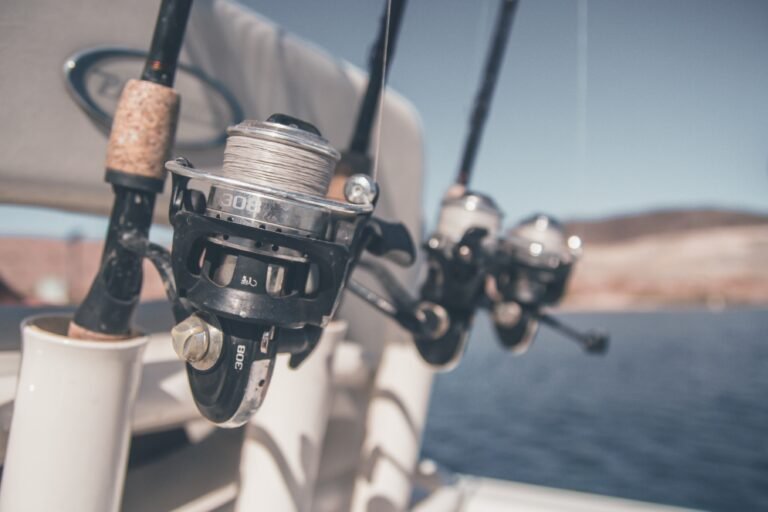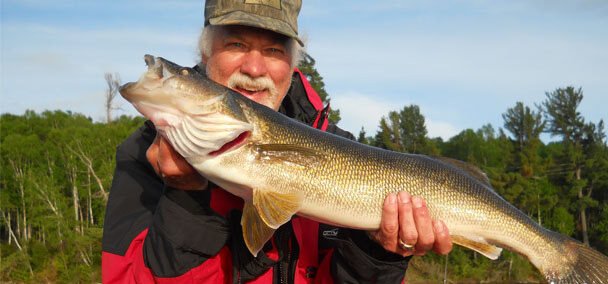Fly Fishing Essentials: The Must-Have Equipment for Beginners
Are you ready to embark on a new adventure and try your hand at fly fishing? As a beginner, it can be overwhelming to navigate the world of equipment and gear. But fear not! In this article, we will break down the must-have essentials for any aspiring fly fisherman. From rods to reels, lines to leaders – we’ve got you covered. So grab a cup of coffee and let’s dive into the exciting world of fly fishing!
Fly Rods
When it comes to fly fishing essentials, one cannot overlook the importance of a good quality fly rod. A high-quality fly rod is essential for casting accuracy and distance, as well as providing sensitivity for detecting bites.
Fly rods come in different lengths, weights, and actions. The length of the rod depends on where you will be fishing; longer rods are better suited for larger rivers or lakes while shorter rods may be more suitable for smaller streams. Weight refers to the thickness of your line and determines what type of fish you can catch. Lighter weights are great for small trout while heavier ones are better suited for bigger game fish like salmon.
The action of a fly rod refers to its flexibility and how much it bends during casting. Fast-action fly rods bend very little whereas slow-action rods bend significantly more which makes them easier to cast and ideal for beginners.
Ultimately, choosing a good quality fly rod is about finding the right balance between weight, length and action that suits your style of fishing. Invest in a reliable brand with durable materials so that your investment lasts long into the future!
Fly Reels
Fly Reels are an essential piece of equipment for fly fishing, as they provide the means for a successful catch. The primary function of the reel is to hold and control the line while casting and retrieving.
When choosing a fly reel, it’s important to consider its size, weight, drag system, and construction. Fly reels come in various sizes from small to large; smaller ones are perfect for lightweight rods used on streams and rivers with smaller fish species.
The material of the fly reel can also affect its performance; generally speaking, aluminum or composite material reels tend to be more durable than plastic ones. Moreover, several high-end fly reels offer sealed drag systems that help prevent water damage.
A good quality Fly Reel should have adjustable drags so you can set your preferred resistance levels when reeling in bigger fish. These settings allow you to change up your approach without having to purchase another piece of equipment entirely!
Purchasing a right-sized Fly Reel with an adjustable Drag System made out sturdy materials will last longer under harsh conditions!
Fly Lines
Fly fishing is a delicate art that requires the right equipment to achieve success. Fly lines are an essential piece of gear for any angler, and choosing the right one can make all the difference in your experience on the water.
When selecting a fly line, it’s important to consider its weight and taper. Weight refers to the thickness of the line, with heavier weights being more suitable for larger fish or windy conditions. Taper refers to how quickly or gradually the line thickens towards its tip, affecting how easily it casts.
Floating lines are ideal for beginners as they’re easy to cast and allow you to keep an eye on your fly’s location. Intermediate lines sink slowly and are great for fishing at moderate depths. Sink-tip lines sink faster but have a floating section that can help control presentation.
Ultimately, choosing a fly line comes down to personal preference based on your skill level and intended use. A good rule of thumb is to match your rod weight with your line weight for optimal performance.
Investing in quality equipment like a high-quality fly line is key when starting out in this sport. Take some time researching different types of fly lines available before making any decisions so that you can find one that fits both your budget and individual needs as an angler!
Leaders and Tippets
Leaders and tippets are crucial components of fly fishing equipment that help anglers present their flies in a realistic manner. A leader is a clear monofilament or fluorocarbon line that connects the fly line to the fly, while tippet is an extension of the leader that attaches to the fly.
Leaders come in different lengths and sizes, with longer leaders being more delicate for dry-fly fishing and shorter ones being stiffer for nymphs and streamers. It’s important to match your leader size with your intended catch and fishing conditions.
Tippets also vary in strength depending on the fish species you’re targeting. Thicker tippets are suitable for larger fish like salmon or trout, while thinner ones work well for smaller species like panfish or bass.
When tying knots between your leader and tippet, it’s essential to use proper techniques such as blood knots or double surgeons’ knots to ensure they don’t slip apart during casting or fighting fish.
Choosing the right leaders and tippets can greatly enhance your chances of success when out on the water. So take some time before heading out on your next fly-fishing trip to select appropriate sizes for both components based on local conditions!
Flies
Flies are one of the most important pieces of equipment in fly fishing. They imitate the natural food sources that fish feed on, such as insects, baitfish and other small creatures. There are countless varieties of flies available on the market, each designed to mimic a specific type of prey.
When choosing flies for your fly box, it’s important to consider the location and season you’ll be fishing in. Matching your fly choice with what’s currently hatching or present in the water can greatly improve your chances of landing a fish.
Dry flies are designed to float on top of the water’s surface and imitate adult insects like mayflies or caddisflies. Nymphs and wet flies sink below the surface and imitate insect larvae or small baitfish.
It’s also important to consider color when selecting flies. In clear water, lighter colored patterns tend to work best while darker colors work well in murky water. Experimenting with different colors and sizes can help you find what works best for certain species or locations.
Having a variety of flies in your tackle box is essential for successful fly fishing. Stock up on popular patterns like Woolly Buggers, Pheasant Tails and Elk Hair Caddis along with some local favorites recommended by experienced anglers or guides at your destination
Waders and Boots
Waders and boots are an essential piece of equipment for fly fishing. Wearing the right waders and boots can make or break your experience on the water.
When it comes to waders, there are two main types: breathable and neoprene. Breathable waders are perfect for warmer weather as they allow moisture to escape, keeping you cool and dry. Neoprene waders, on the other hand, provide insulation in cooler weather but can be uncomfortable in warmer temperatures.
Boots also come in different styles – felt-soled or rubber soles. Felt-soled boots offer excellent grip on slippery rocks but can spread invasive species if not properly cleaned between trips. Rubber sole boots are a safer option for avoiding invasive species.
It’s important to choose the right size when purchasing waders and boots. Ill-fitting gear can cause discomfort while fishing which will ultimately impact your overall experience.
Taking care of your waders is crucial for their longevity. Always rinse them off after use with freshwater, hang them up to dry completely before storing them away from sunlight or heat sources.
Clothing
When it comes to fly fishing, appropriate clothing is essential. It not only protects you from the elements but also helps you blend in with your surroundings and avoid spooking fish.
First on the list is a good pair of sunglasses. Polarized lenses reduce glare, allowing for better visibility into the water, and protect your eyes from harmful UV rays.
Next up are lightweight breathable shirts and pants made specifically for fishing that protect against sunburn while keeping you cool and comfortable all day long.
A quality rain jacket is also necessary since weather conditions can change quickly when out on the water. Look for one that’s waterproof yet breathable to keep you dry without making you sweat.
It’s important to wear appropriate footwear as well. Wading boots provide traction on slippery rocks and allow anglers to wade through deeper waters comfortably.
Don’t forget a hat or cap to shield your face from direct sunlight when casting towards sunrise or sunset. Choose one with a brim wide enough to shade both the front and sides of your face.
Investing in proper clothing will make your fly fishing experience more enjoyable by keeping you comfortable while helping improve your chances of catching fish.
Accessories
Accessories are an essential part of fly fishing gear that can make your experience more comfortable and efficient. One of the most important accessories is a good pair of polarized sunglasses. Not only do they protect your eyes from harmful UV rays, but they also help you spot fish in the water by reducing glare.
Another useful accessory is a fishing vest or pack to hold all your gear while keeping it organized and easily accessible. A quality net is also crucial for safely landing fish without causing injury.
A waterproof dry bag or case can keep electronics and other valuables safe while out on the water, as well as a handy tool like forceps or pliers for removing hooks. A durable hat with a brim provides sun protection while also improving visibility on sunny days.
Consider investing in a portable grill for cooking up fresh caught fish by the riverbank – it’s just another way to enhance your overall fly fishing experience!
Conclusion
After going through the must-have equipment for beginners in fly fishing, it is clear that there are several important items required to get started. Each piece of equipment plays a crucial role in ensuring a successful and enjoyable fly fishing experience.
Fly rods come in different weights and lengths, with each suited for specific types of fish and water conditions. Fly reels should be matched to the weight of the rod and provide smooth drag systems for fighting fish. Fly lines also come in various sizes and tapers, with floating or sinking options depending on the type of fishing.
Leaders and tippets create a seamless connection between the line and fly while providing enough strength to handle larger fish. Flies mimic natural insect patterns, which entice fish into biting. Waders keep you dry when standing in shallow streams or rivers while boots provide traction on slippery surfaces.
It’s essential to wear appropriate clothing suitable for varying weather conditions, including sun protection gear like hats, glasses, or sunscreen if needed. Accessories such as nets, forceps pliers can aid your catch-and-release efforts effectively.
Having proper gear is vital when starting out with fly fishing as it enhances your performance while making it safe & comfortable at all times during an angling session. It’s worth investing time researching before purchasing any item so that you choose wisely according to your needs!
FAQ’s (Frequently Asked Questions)
FAQ’s (Frequently Asked Questions)
Q: How do I choose the right fly rod?
A: When choosing a fly rod, consider your skill level, the type of fishing you plan to do, and your budget. Look for a rod that feels comfortable in your hand and has a balanced weight.
Q: What size waders should I get?
A: Wader sizing varies by manufacturer, but it’s essential to have waders that fit well. Measure yourself before purchasing and check the manufacturer’s sizing chart.
Q: Do I need special boots for fly fishing?
A: Yes! Fly fishing boots are specially designed with good traction on rocky or slippery terrain. They also help keep feet warm and dry while standing in water.
Q: What is tippet material used for?
A: Tippet material is used as an extension of the leader to tie on flies. It comes in different strengths and sizes depending on what type of fish you’re targeting.
Having the right equipment can make all the difference when starting out in fly fishing. By investing in quality gear such as a fly rod, reel, line, leaders/tippets, flies, waders/boots,clothing,and accessories , beginners can increase their chances of success on the water while enjoying this exciting sport! So go ahead and start gathering up all these essentials before heading out into nature with your trusty new equipment!


